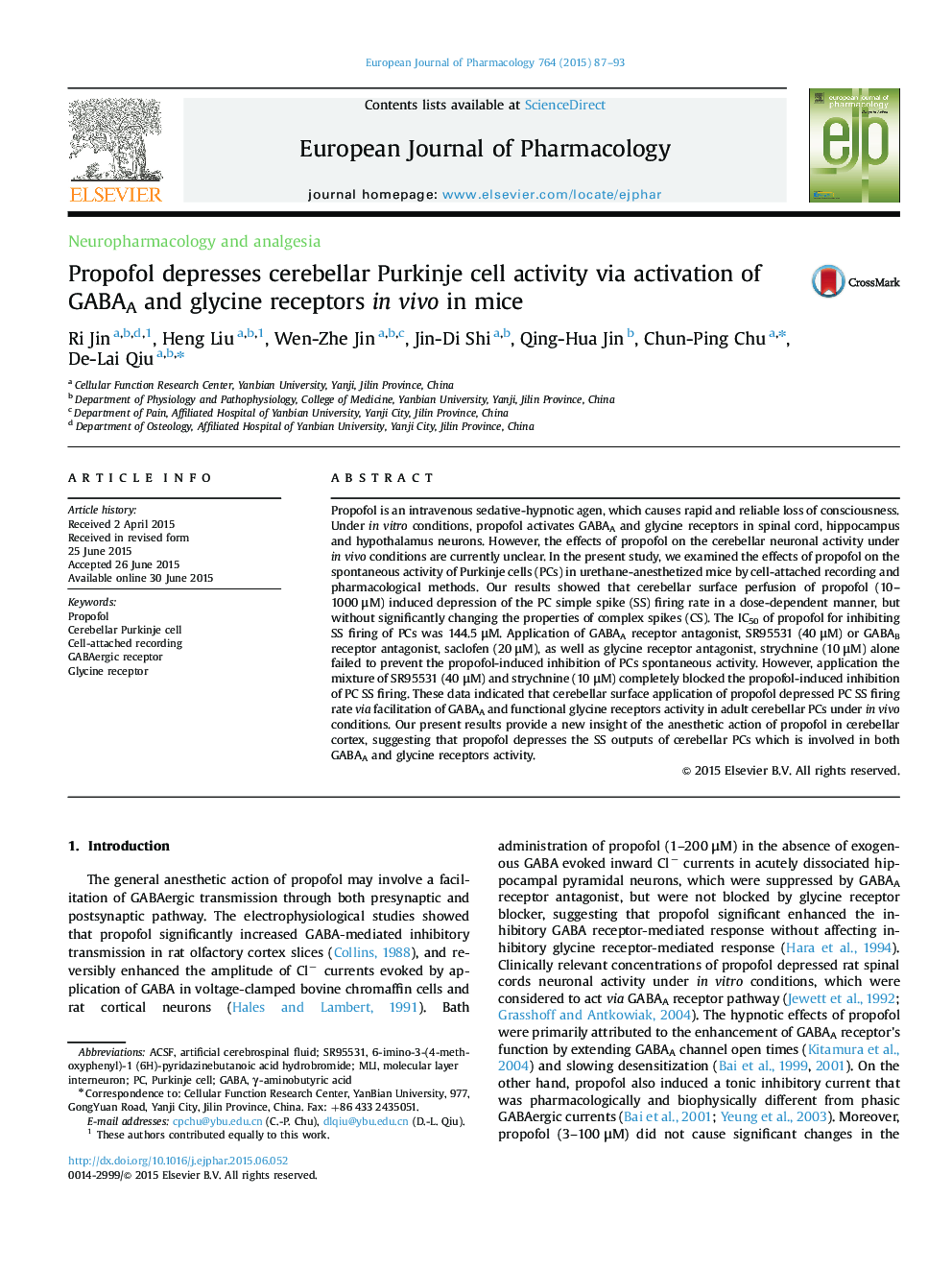| Article ID | Journal | Published Year | Pages | File Type |
|---|---|---|---|---|
| 2531335 | European Journal of Pharmacology | 2015 | 7 Pages |
Propofol is an intravenous sedative-hypnotic agen, which causes rapid and reliable loss of consciousness. Under in vitro conditions, propofol activates GABAA and glycine receptors in spinal cord, hippocampus and hypothalamus neurons. However, the effects of propofol on the cerebellar neuronal activity under in vivo conditions are currently unclear. In the present study, we examined the effects of propofol on the spontaneous activity of Purkinje cells (PCs) in urethane-anesthetized mice by cell-attached recording and pharmacological methods. Our results showed that cerebellar surface perfusion of propofol (10–1000 μM) induced depression of the PC simple spike (SS) firing rate in a dose-dependent manner, but without significantly changing the properties of complex spikes (CS). The IC50 of propofol for inhibiting SS firing of PCs was 144.5 μM. Application of GABAA receptor antagonist, SR95531 (40 μM) or GABAB receptor antagonist, saclofen (20 μM), as well as glycine receptor antagonist, strychnine (10 μM) alone failed to prevent the propofol-induced inhibition of PCs spontaneous activity. However, application the mixture of SR95531 (40 μM) and strychnine (10 μM) completely blocked the propofol-induced inhibition of PC SS firing. These data indicated that cerebellar surface application of propofol depressed PC SS firing rate via facilitation of GABAA and functional glycine receptors activity in adult cerebellar PCs under in vivo conditions. Our present results provide a new insight of the anesthetic action of propofol in cerebellar cortex, suggesting that propofol depresses the SS outputs of cerebellar PCs which is involved in both GABAA and glycine receptors activity.
